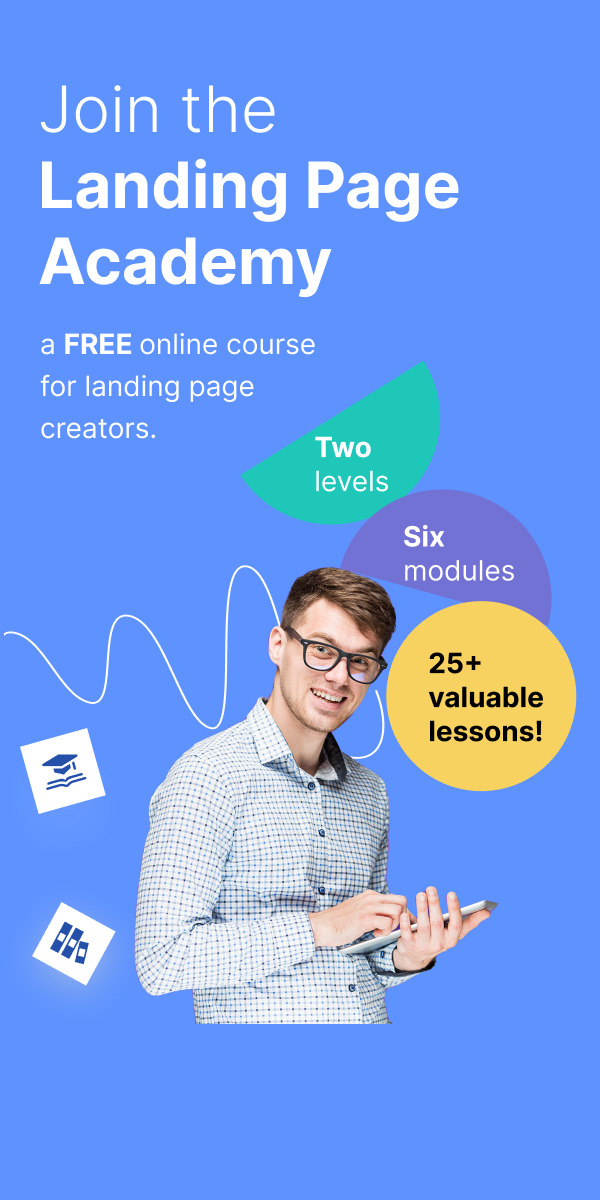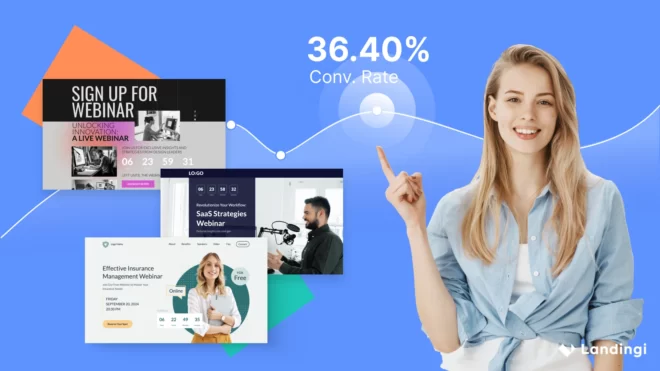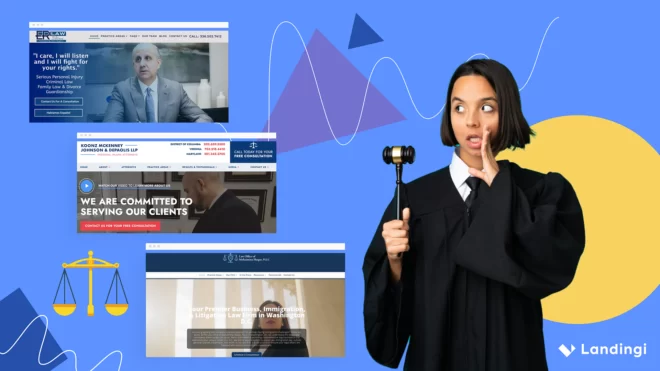As a real estate company, getting someone’s contact information can be immensely helpful. With it, you can follow up with the potential customer to qualify them as a lead and nurture them right until the sale takes place. However, it all starts with being able to talk with them one-on-one. That’s where real estate landing pages come in.
It’s a standalone page that is focused on one specific goal. In real estate, it can mean capturing contact information for a meeting or making a reservation on a house or an apartment. Usually, a single landing page promotes one piece of real estate – a house, an apartment, or an apartment complex.
Landing pages are widely used in paid ads since they retain focus more effectively, which translates into a higher conversion rate. As a result, it’s a great option for developers and realtors who want to optimize their campaign efficiency. Let’s explore real estate landing pages, including tips to increase conversion rate and 24 examples for inspiration.
Make your sections smartable and let go of mundane manual tasks with Smart Sections! An easy way to manage bulk changes.
Why Should You Use a Real Estate Landing Page?
If you’re selling or renting a property and you’re advertising it online, using a landing page instead of a traditional homepage can be beneficial in many ways.
Landing pages reduce distraction. Thus, leading the visitor to a specific action (in this case, their contact information in exchange for the offer). By applying best practices to your designs, there should be no links that take visitors anywhere outside the landing page. In fact, all of the buttons work in unison to make sure conversion takes place.
Conversion-wise, it’s also a good idea to create a landing page for each offer. That way, every property can have a dedicated space, so you can include all the necessary details and present them more comprehensively.
From the digital marketing perspective, landing pages work well with A/B testing. You can duplicate a landing page, make a change, and compare both versions to see which one gets the job done better.
You can use real estate landing pages for offline advertising too. For example, you can tell people to go to a specific URL on your website (ex. mywebsite.com/landingpage) from a flyer, business card, postcard, etc. You can also include a QR code that sends them directly to the landing page.
With either of these methods, you can find out which offline advertising campaigns are most effective (by creating separate landing pages for each advertising method and seeing which page gets the most hits).
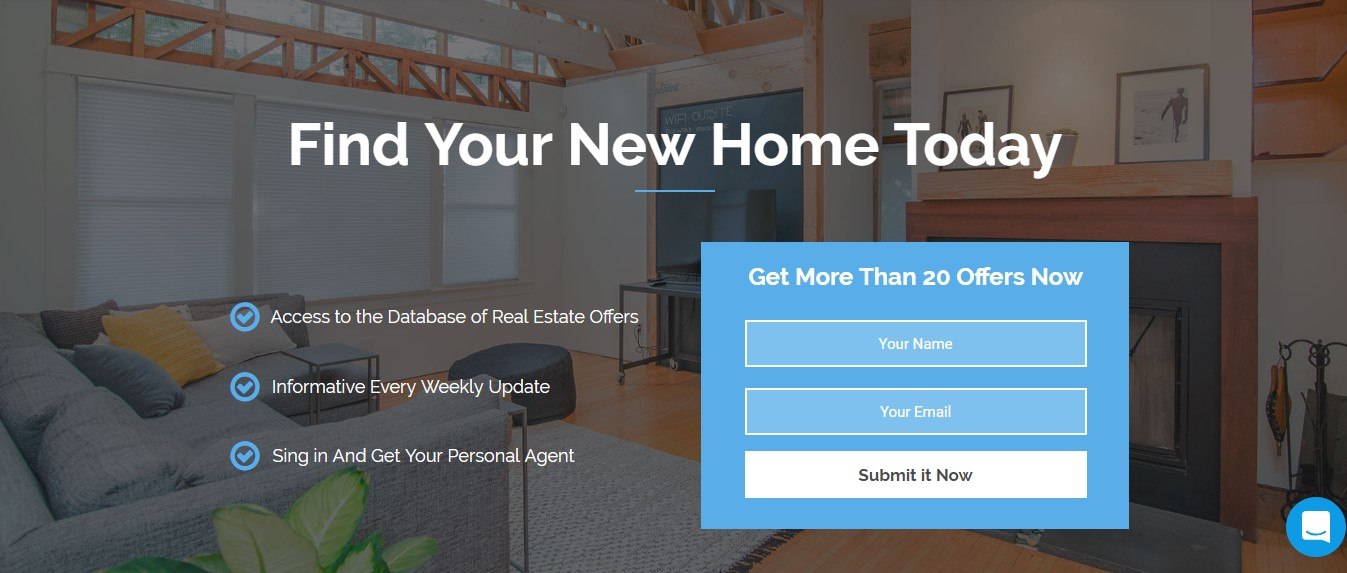
The above screenshot is just one of over 300 available at Landingi.
Real Estate Landing Page Tips
When it comes to tips for real estate landing pages, see below for a few most important ones:
Include a Direct Heading
This is typically a short message that acts as the most prominent text on the page. For example, “Download Our Free eBook on Selling Your Home” or “Find Out Home Much Your Home is Worth by Filling Out the Following Form”. Keep it short and to the point. This message should also tie in with your ad so the visitor knows immediately that they are going to get what they came for.
Promote an Offer or Value Prop
The offer or value prop is what you plan to give to the visitor in exchange for their contact information. It can be a free piece of content like an eBook, a free estimate, a free consultation, etc. As long as the offer provides enough value in order to convince the visitor to give away their contact information.
Present a Clear CTA
The visitor should be able to easily identify how to receive the offer. The call to action (CTA), in this case, the contact form and submit button, should be readily available and instructions should be clear. Furthermore, the call to action should be enticing and provide value.
Embed Callback Widgets or Pop-ups
Scheduling calls and meetings with potential clients usually requires a lot of in terms of organization and communication, even before the actual call or meeting takes place. However, there are lots of tools that make this process easier. The best part is that you can embed such tools in your real estate landing pages.
There are two main ways of going about it. Either create a dedicated section for that purpose or create a pop-up with a limited-time offer to create a sense of urgency and entice people to reach out to you.
Use Landing Page Templates
Most real estate businesses that utilize landing pages in their marketing efforts, create multiple pages, with each offer displayed on a dedicated landing page. While it might seem time-consuming, it actually allows you to save a lot of time if you do it right.
You probably create new offers quite often, so creating and publishing new content is a part of your job description. With a few tricks, you can expedite this process considerably.
By using landing page templates, the design of a new page is much faster. Modify the sections, change the logos and images, and add the copy instead of building the entire layout from scratch.
For the parts that are used on all of your real estate landing pages – company description or footer with Terms and Conditions and Privacy Policy – it’s best to use Smart Sections.
It’s a feature that lets you make a change in one section that is automatically applied to all the landing pages where it’s included. Think about how much time you can save when updating your company information by doing it once instead of dozens of times.
Check out 300+ fully customizable landing page templates by Landingi.
Get 111 Landing Page Examples—The Ultimate Guide for FREE
Keep the Number of Fields Low
Most real estate marketing efforts are not pointed towards outright purchase. Instead, realtors and other sellers gather interested prospects for further nurturing. Because of that, your real estate landing page should reflect the journey accurately. As such, its job is to get visitors to fill out a contact form.
In order to encourage as many people to perform this task as possible, your form should only contain the most necessary fields. Name, email, and phone number are usually enough, though it might vary slightly depending on the particular case.
Learn what the ideal form on a landing page should look like.
Add Photos of the Actual Real Estate
Visualizations of a house seem like a great idea on paper, but replacing them with real images is a better way for visitors to actually see their potential home. This technique lets them imagine themselves in a space they have never been to, and it reinforces the feeling that the house in question is a real place instead of a vision that is yet to come.
Being able to see the entire space by using a simple gallery might be a challenge, though. Depending on the number of rooms, it could take a large number of images to capture the entire space. However, there is a workaround that takes your presentation game to the next level.
It’s called a virtual tour. It’s a video recording showing every single room of the real estate in question. An agent usually walks around the space and records it from their point of view. Video tours provide a more comprehensive view and allow to see the size of the place more accurately.
Build Trust with Social Proof
Client testimonials, opinions, reviews, and ratings may increase a company’s credibility, which is of great importance for a target audience of that kind. Homeseekers (or landseekers) are ahead of a major decision in their lives, and for sure, they won’t buy a pig in a poke. This is a very requiring group, and you must provide them with a very clear and well-thought justification why they should choose your offer rather than one of your competitors.
Thus, using social proof (written or spoken, simple comments or video testimonials — no matter) is ranked very high on the real estate seller’s checklist of things to do before putting his offer online. That way, it would convert visitors into potential customers more effectively.
Find out how you can supercharge your landing pages with social proof.
Be creative!
There is a multitude of concepts helping to make a high-converting landing page in the real estate field.
You may use upcoming listings to show some future offers to be announced or unlocked later. This way, you may step by step, nurture their curiosity and engage them emotionally in the process. Another idea is giving them some incentives like — for example — free services.
Buying or renting a property for most people is not a piece of cake, yet a decision may drain their wallets out of money. Therefore, offering them a free valuation (performed by experts) or a dedicated real estate agent to take care of them during the customer journey will be found polite and generous.
On a landing page, you may lure customers not only with direct property images but also visuals related to the city, neighborhood, people. For this purpose, you may use the city skyline, video stories told by local people, pictures of objects around worth to come in, or sights to see.
Real Estate Landing Page Examples
Now that we’ve covered why you should use landing pages and some of the main types that real estate companies use, let’s take a look at different examples below and learn more about their pros and cons.
1. Lesko to the Beach
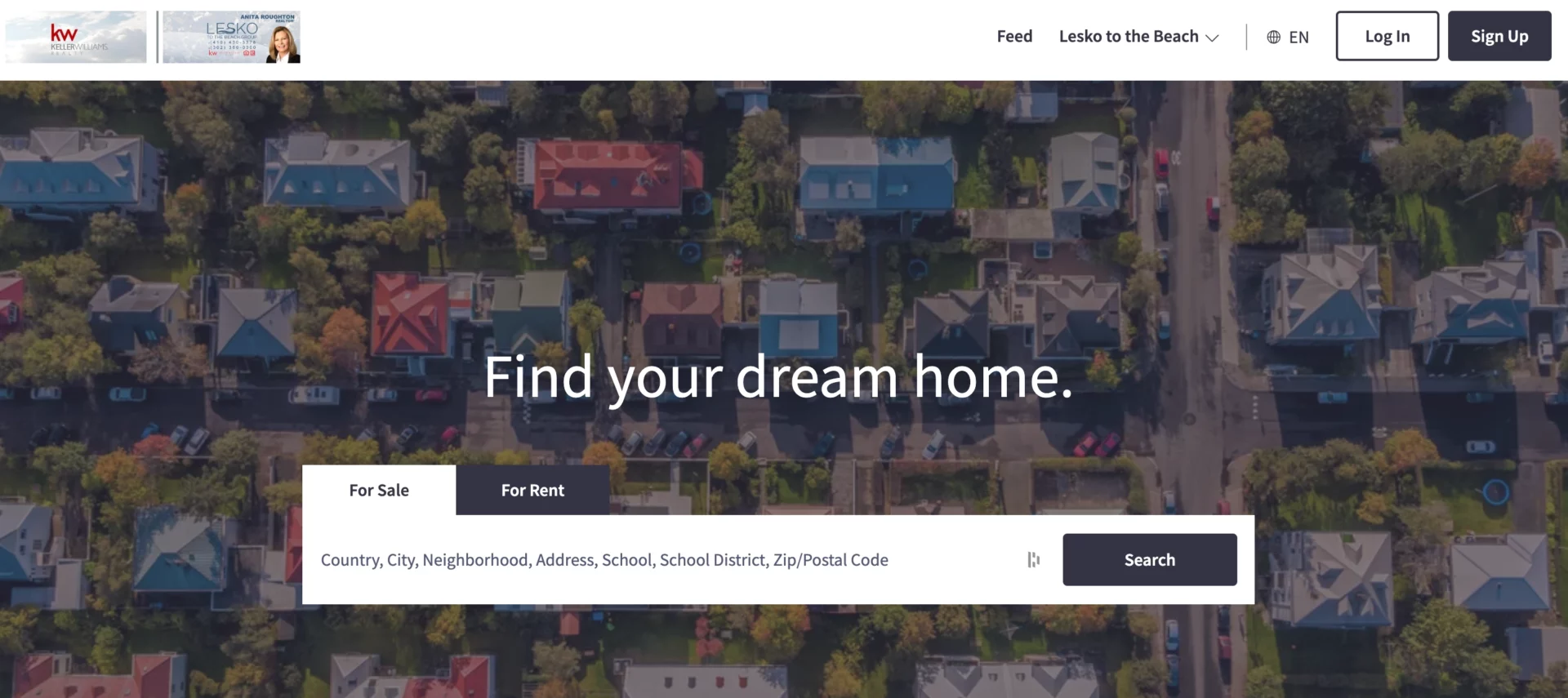
Pros: The page background with a nice neighborhood looks like a promise of good living, which is perfectly suited to the “dream home” phrase used in the headline. The form is short, inviting visitors to fill in.
Cons: Copy bearing the core benefits or anything else encouraging a potential buyer is missing.
2. Opendoor
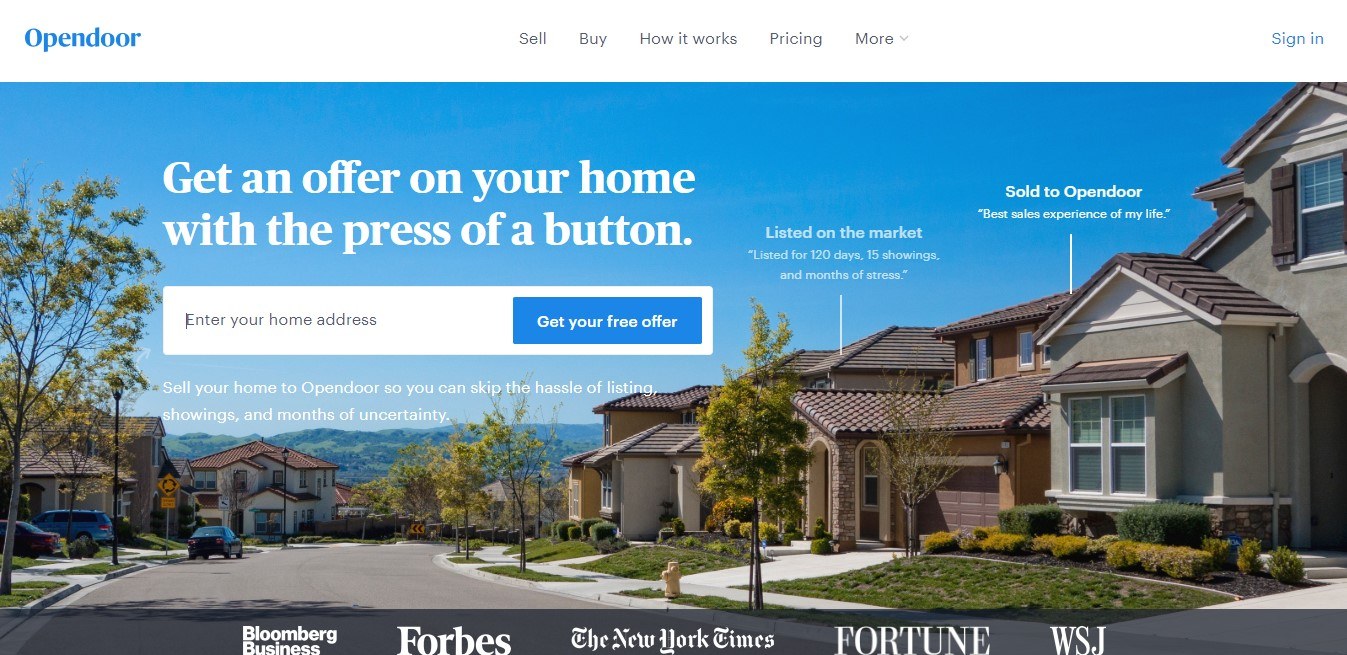
Pros: The CTA is clear and to-the-point: “Get an offer on your home with the press of a button.”
Cons: The other text over the background image is tough to read and may distract the visitor.
3. Remax

Pros: Two CTA buttons are well-centered in the hero section and can’t be overlooked.
Cons: The headline is placed at the bottom… Even worse, it is in Polish, though the language is switched to English! Finally: too many links at the top menu. Generally, there is a long road to perfection…
4. Adams Homes

Pros: Clean layout in a white color scheme with red CTA buttons standing out and ready to click through.
Cons: This generic property listing looks like a failed chance for distinction from many other sites of that sort.
5. Beazer Homes

Pros: A map widget indicating quickly where the offered properties are located across the USA — crucial information for many potential sellers.
Cons: The discount offer popping up at the top of the screen immediately after landing on the page may be annoying. No testimonials make some people afraid of visiting an anonymous company site that is not worth putting trust in.
6. Corcoran
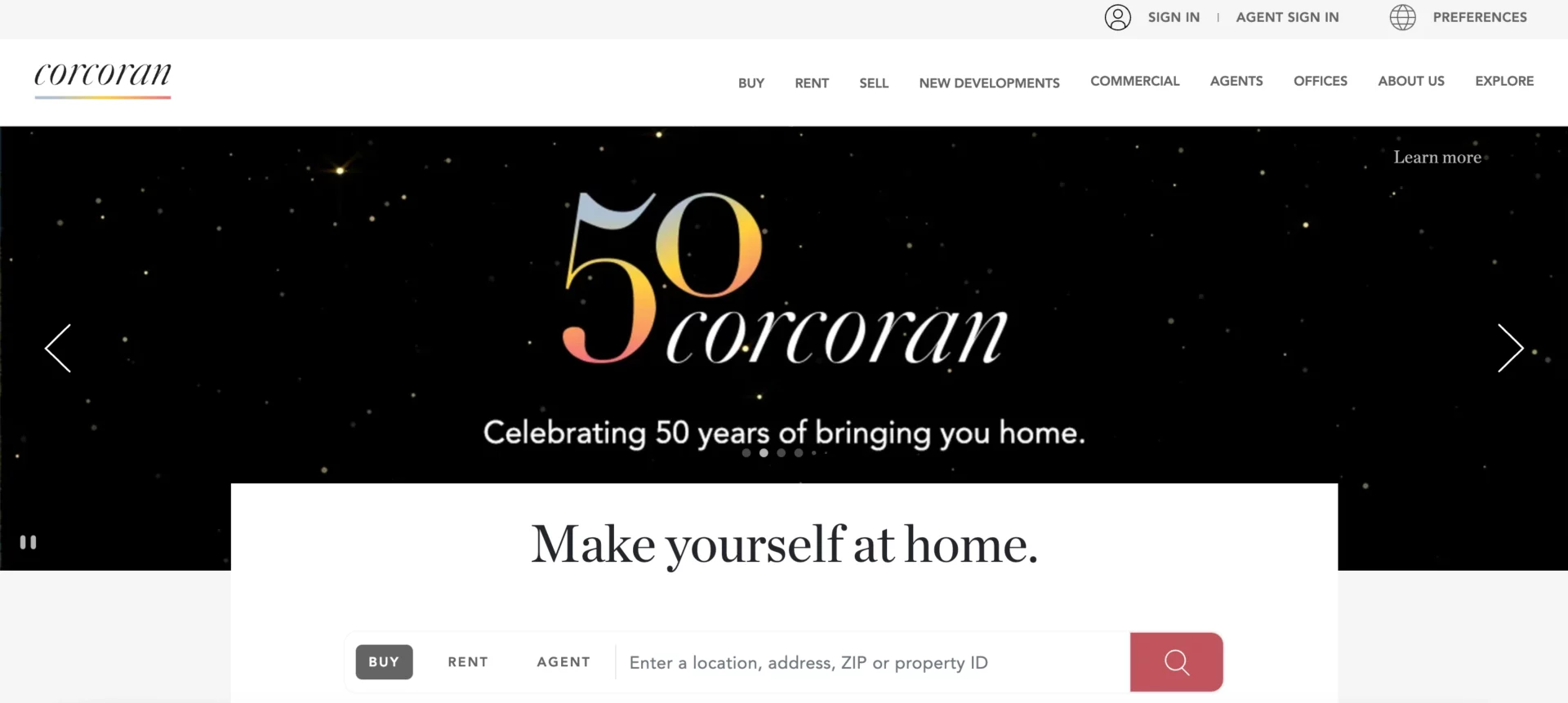
Pros: The headline exploiting social proof (find out more) capable of building trust in a moment.
Cons: The menu links should be removed to prevent visitors from veering away from the page’s CTA. By getting rid of potential distractions on your landing page, you are one step towards creating a real estate landing page that converts visitors into leads. In the case of properties nearby Miami beaches, it would be nice to top them up with some star ratings or/and reviews.
7. ExpertHomeOffers
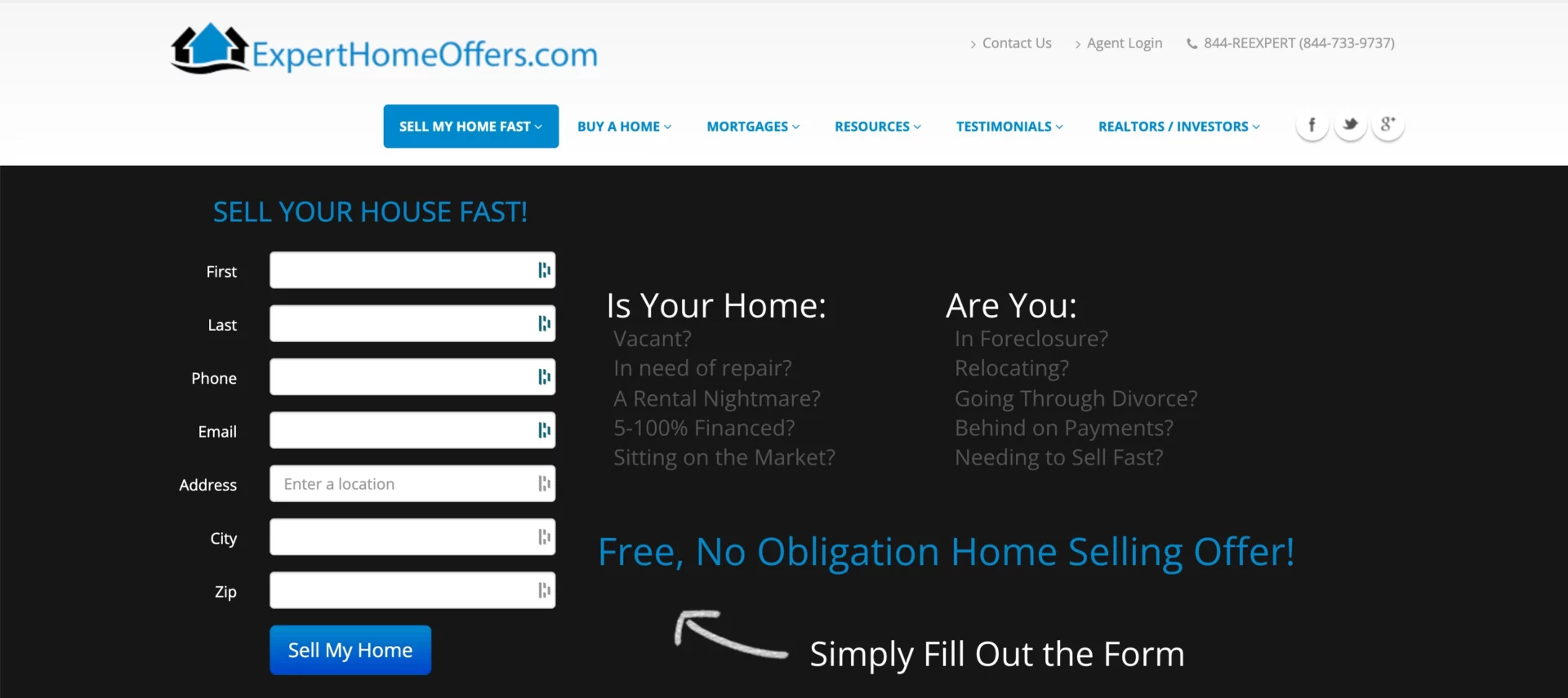
Pros: The landing page sets clear expectations for users. There are three steps involved in this process. Users know what comes after filling out the form and what happens after the last step.
Cons: The form looks too formal and has too many fields. Although, in this case, it is necessary, it is a good practice to turn it into a (pre)sales funnel by moving some fields to a second step. Additionally, a grey text almost vanishes in the black background and can be missed.
8. Jameson Brinck (Samson Properties)
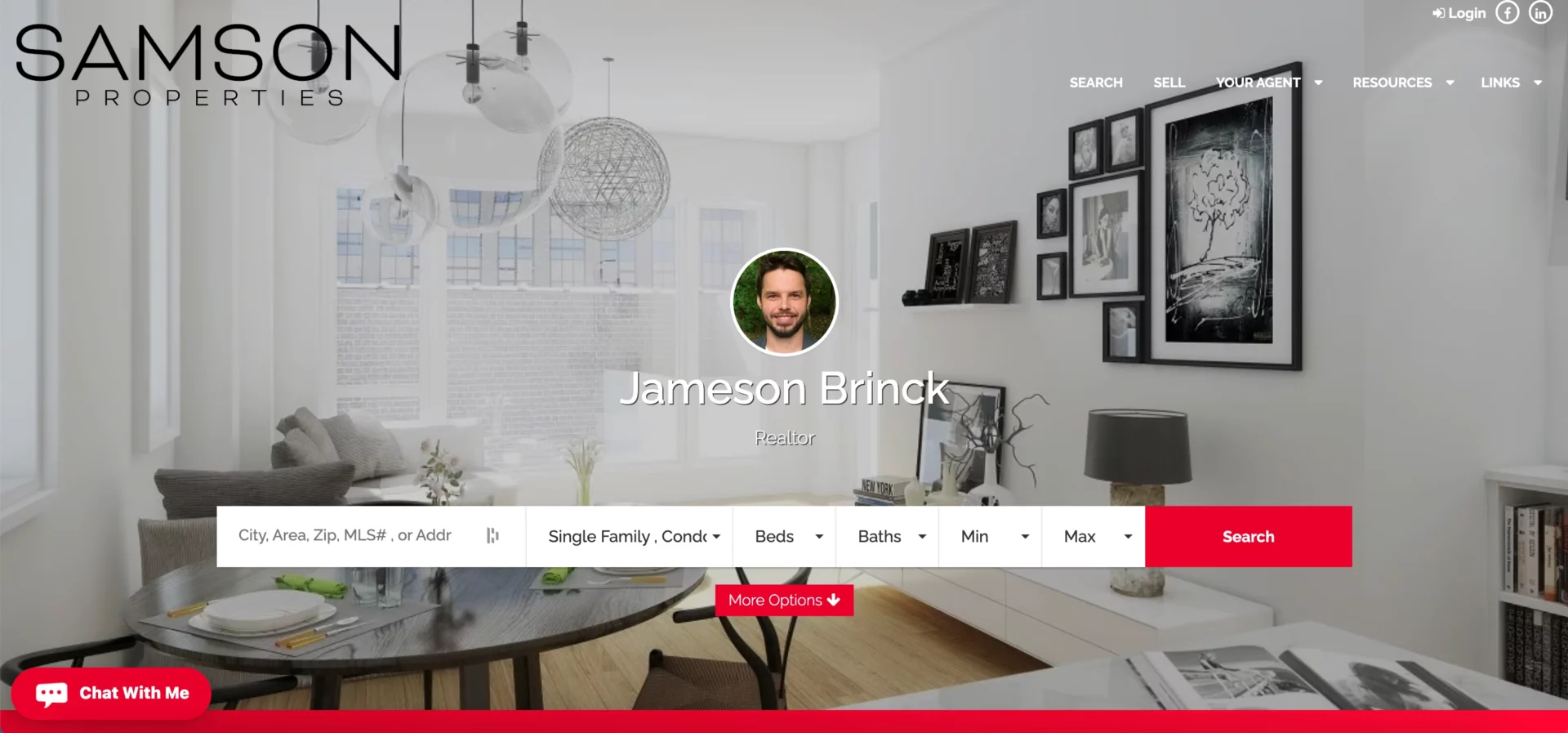
Pros: Amazing interiors in the background instantly move visitors to their (new) homes, rousing expectations. A creative way of persuasion through images.
Cons: Copy is almost absent, which makes persuasion of non-visualizers impossible.
9. Lennar

Pros: The page immediately draws your attention to the form thanks to the great use of color. The copy explains everything you need to know before filling out the form.
Cons: There are too many elements going on the page. Aside from the needless menu links and social media buttons, the chat widget is partially covering the form. The latter, additionally, consists of too many fields.
10. Agent Pronto
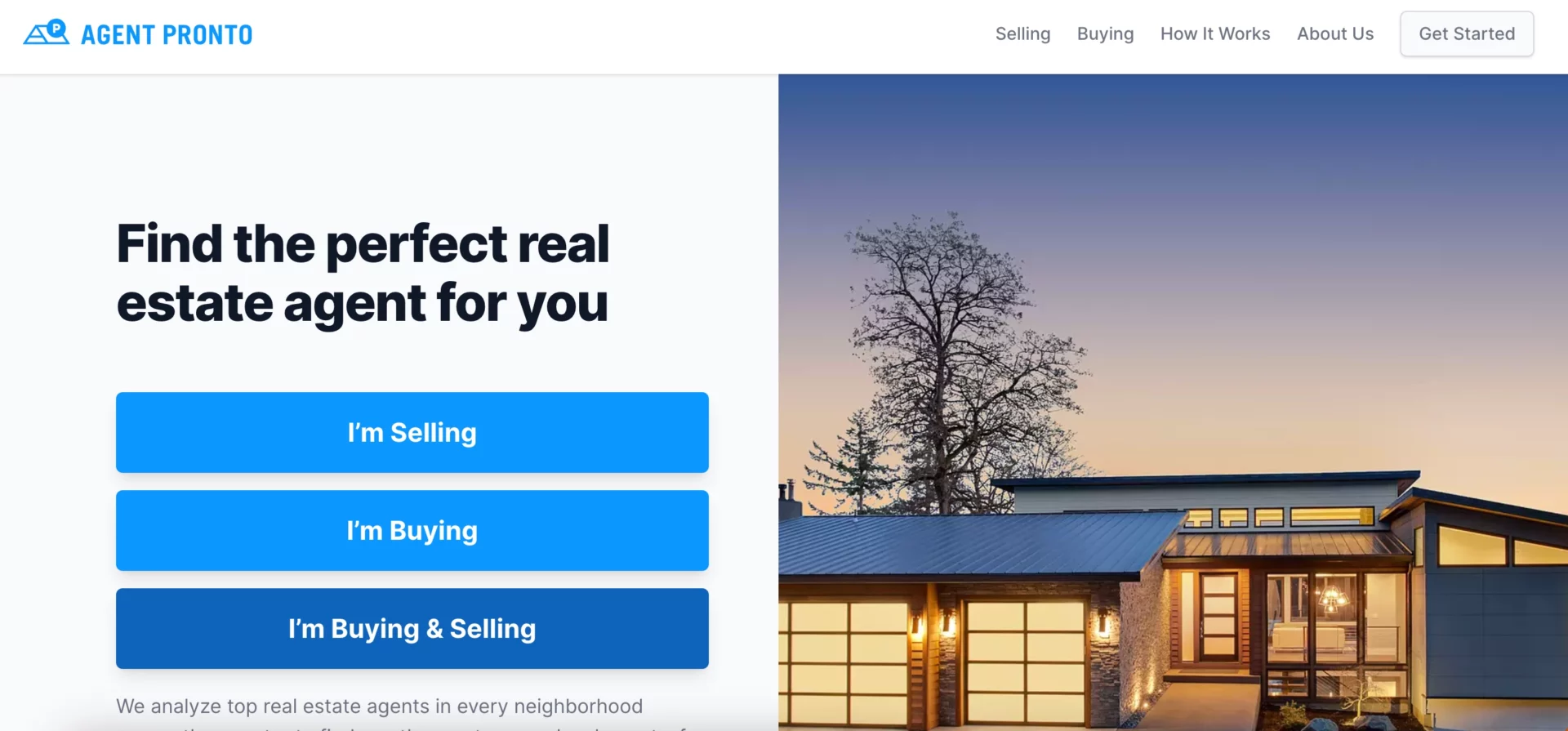
Pros: This page benefits from having a header with no distracting links. The copy and value proposition are clear. The visitor knows exactly what to do and what they’ll get by submitting the form
Cons: The multi-step form is like a neverending story. Option for the tenacious only.
11. Ten-X Commercial
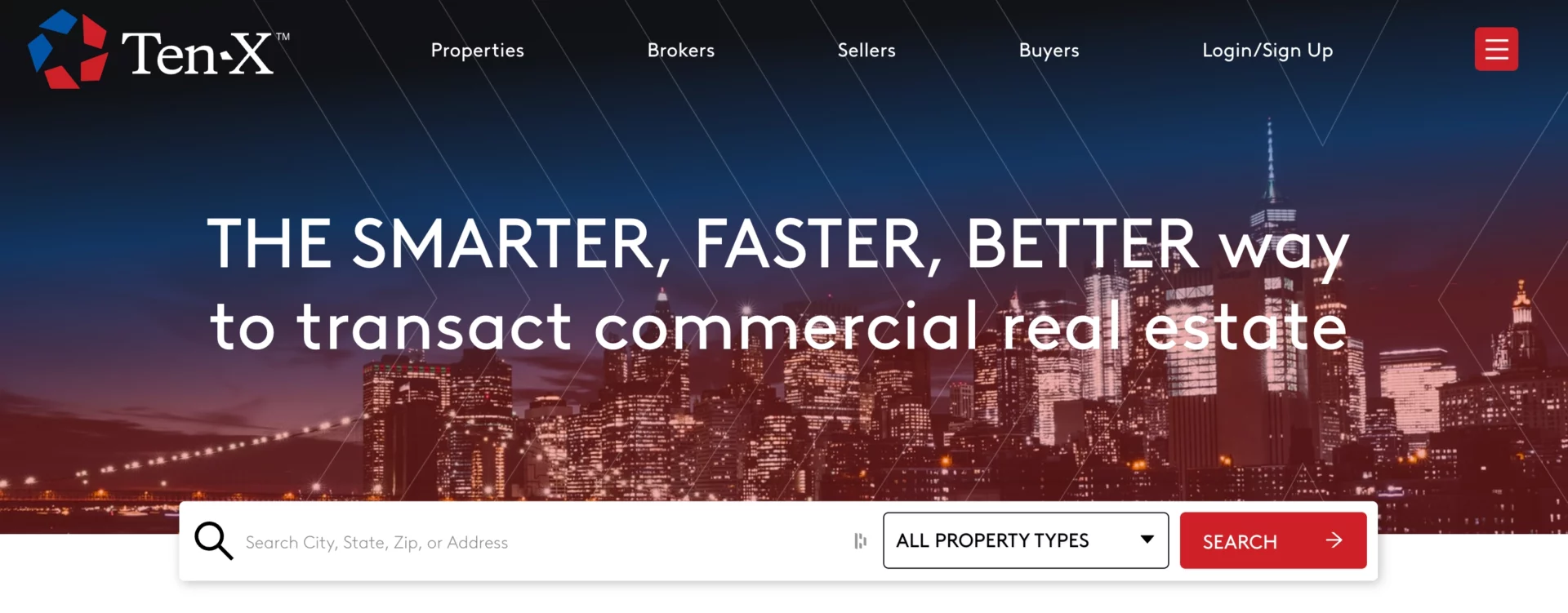
Pros: The text is easy to read, CTA is well-exposed with a red button, and the form is straightforward — perfect for a commercial real estate landing page.
Cons: The header copy sounds a bit too general. Using a tagline conveying one or two numbers or facts would be more persuasive.
12. The Kingdom Real Estate
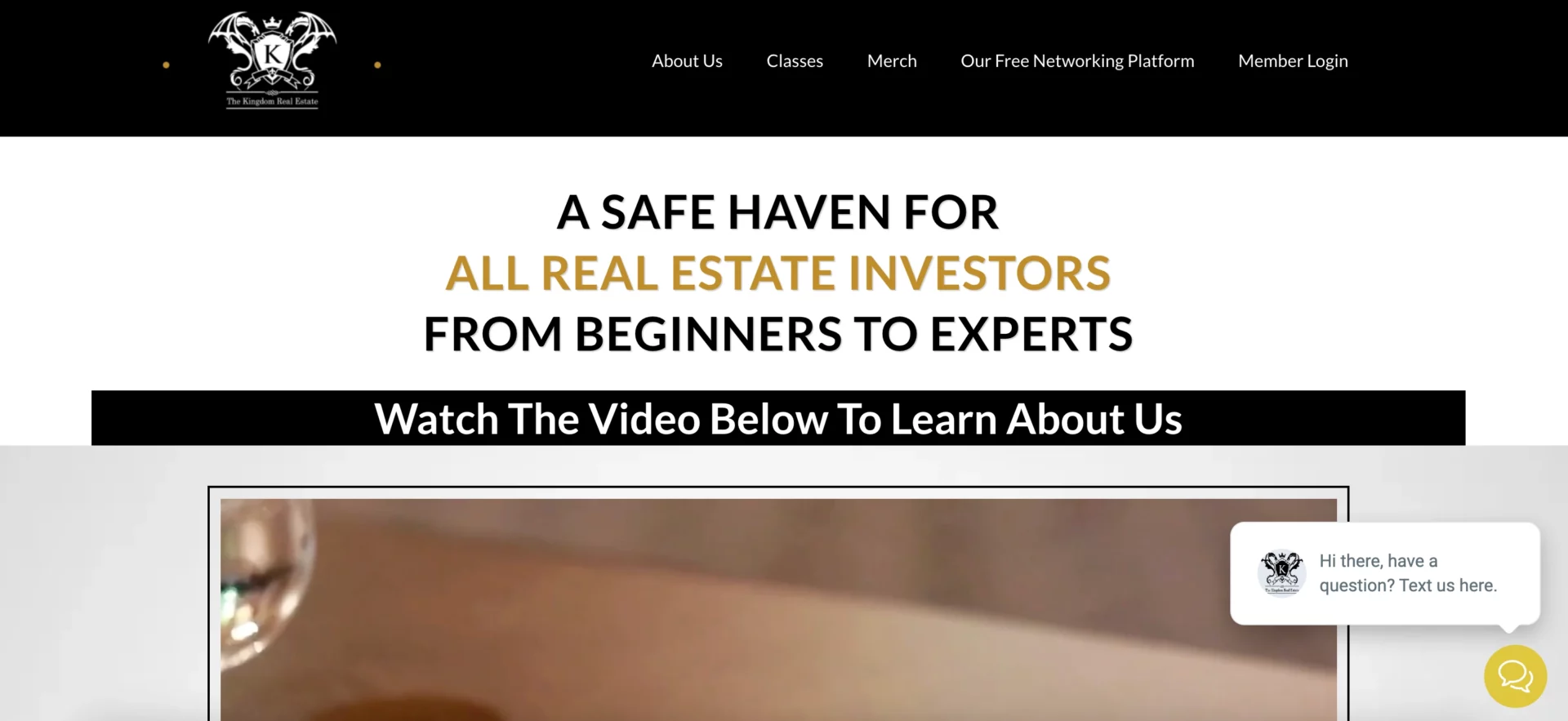
Pros: The page features a clear copy communicating the reason why the visitor may trust the company and rely on their staff expertise.
Cons: The CTA button is far away from the hero section, and it could be a challenge to find it. The overall design looks consistent, but in terms of attractiveness, there is some room for enhancements.
13. Placester
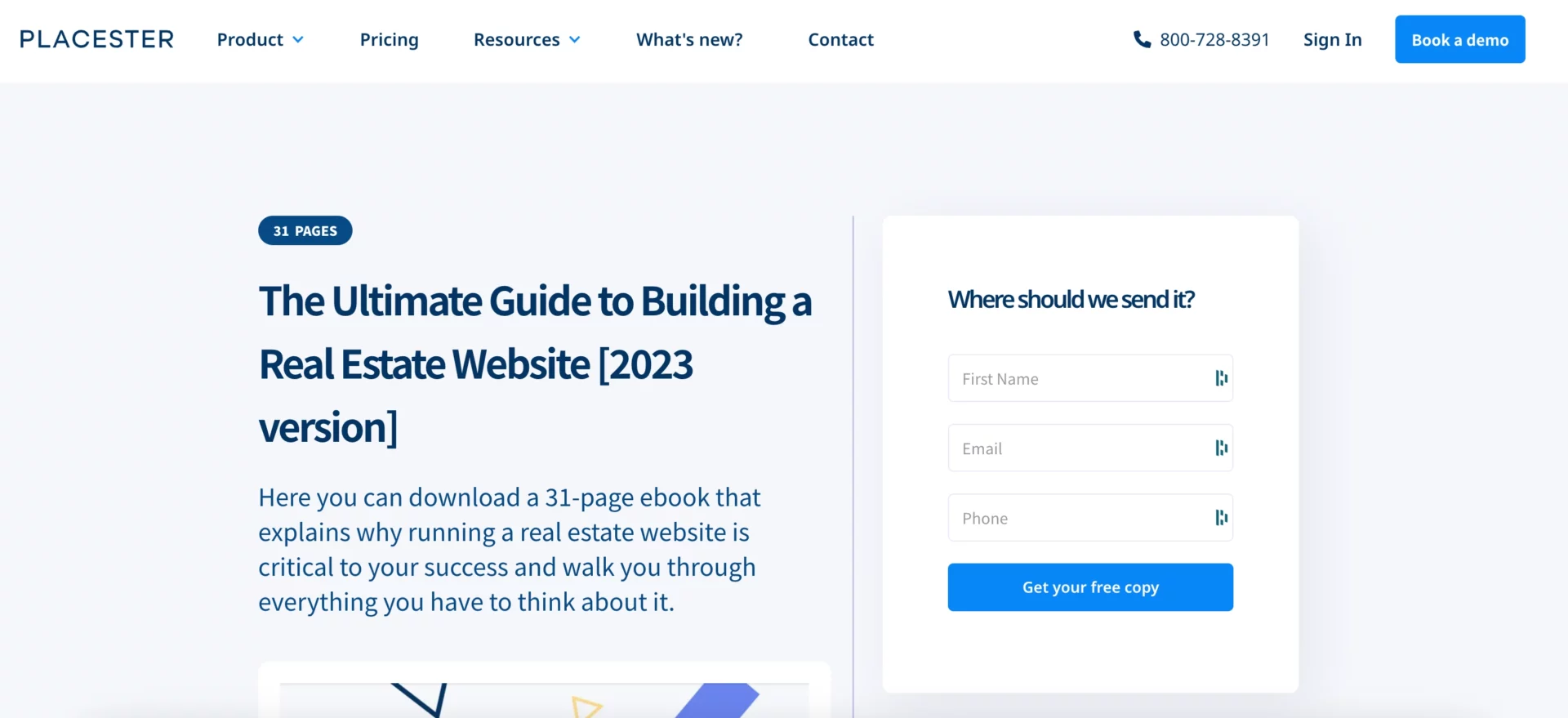
Pros: The layout and design of this real estate landing page sample work well together. The contrasting colors (dark blues with backgrounds in greyscale) help draw attention to the form.
Cons: The navigation links in the site’s menu are a distraction. They should be removed to emphasize the goal of the page (to have the visitor complete the form). Adding some visuals, on the other hand, may make this page look more lively.
14. Rush Realty
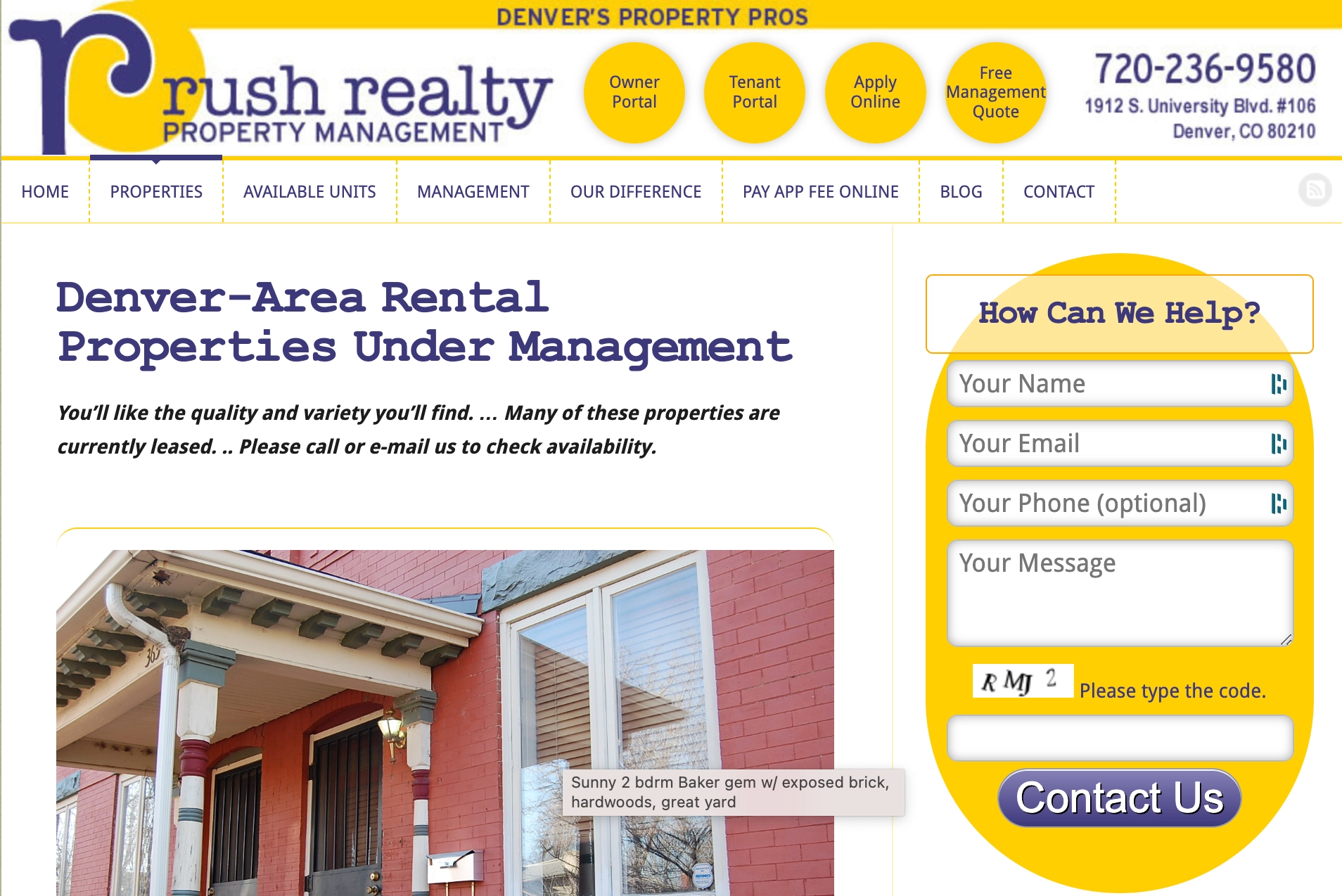
Pros: The unnecessary field in the form is optional, and the primary CTA is well-placed. But, to be honest, preferably, I would type here “not applicable”.
Cons: It all looks like a leaflet from the nineties and does not fit the time. Many links, many fields, and the old newspaper font. This is the first example of how a real estate landing apple should not be designed.
15. RoofStock

Pros: The headline focuses on the key benefits of the platform. It further breaks down these points below the offer to make a more compelling case. Also, using the numbers in the following sections sparks the imagination. And last but not least: this amazing animated map!
Cons: The points on the map are, unfortunately, not clickable. The top bar menu is subtly designed, but it still includes too many links.
16. HomeLight
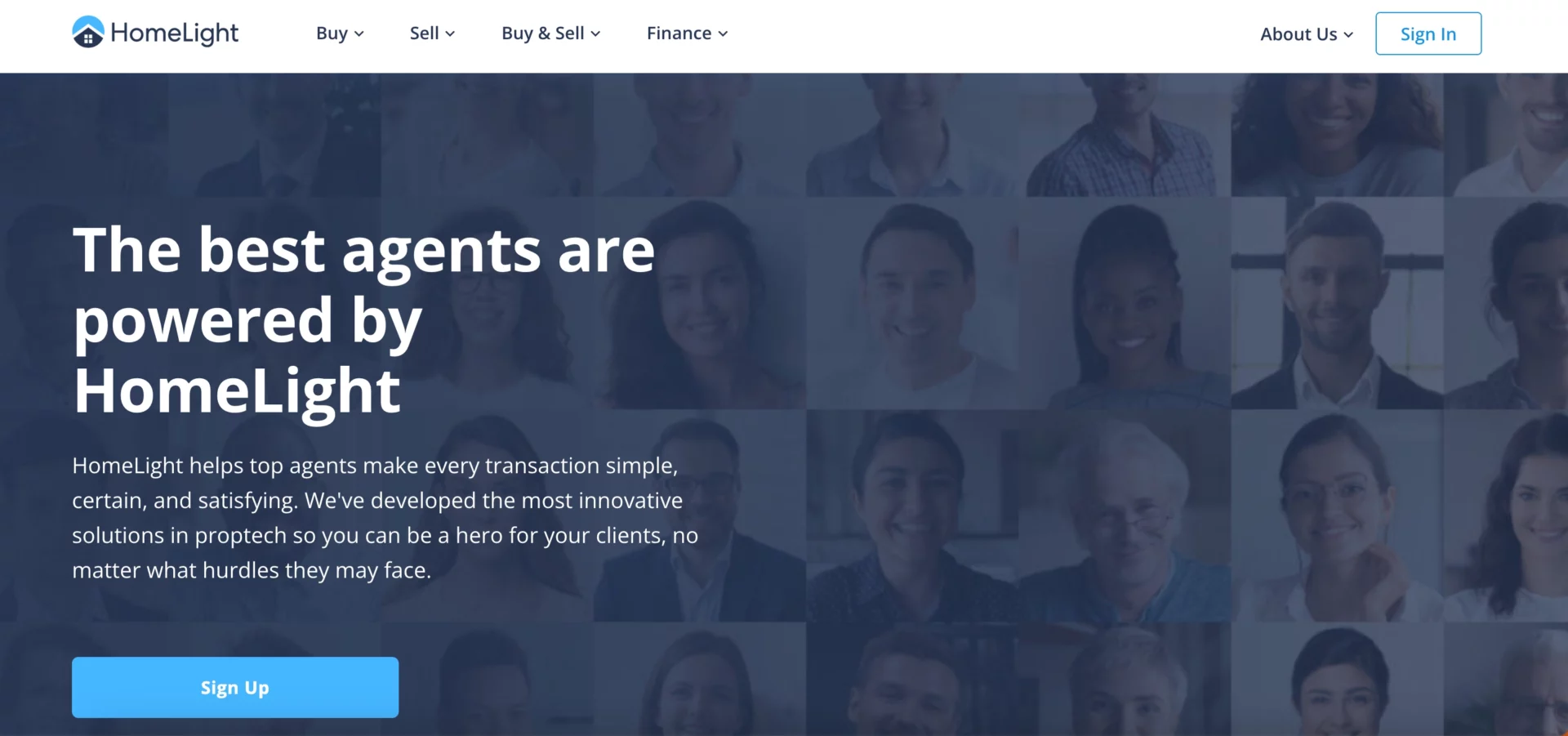
Pros: Page design and structure are kept simple, with the only CTA standing out at the bottom left corner — this is clear and no one will go astray. Smart sign-up form with no unnecessary fields.
Cons: Adding more colors to the picture in the background may energize this page and make it more powerful.
17. NPP Residential
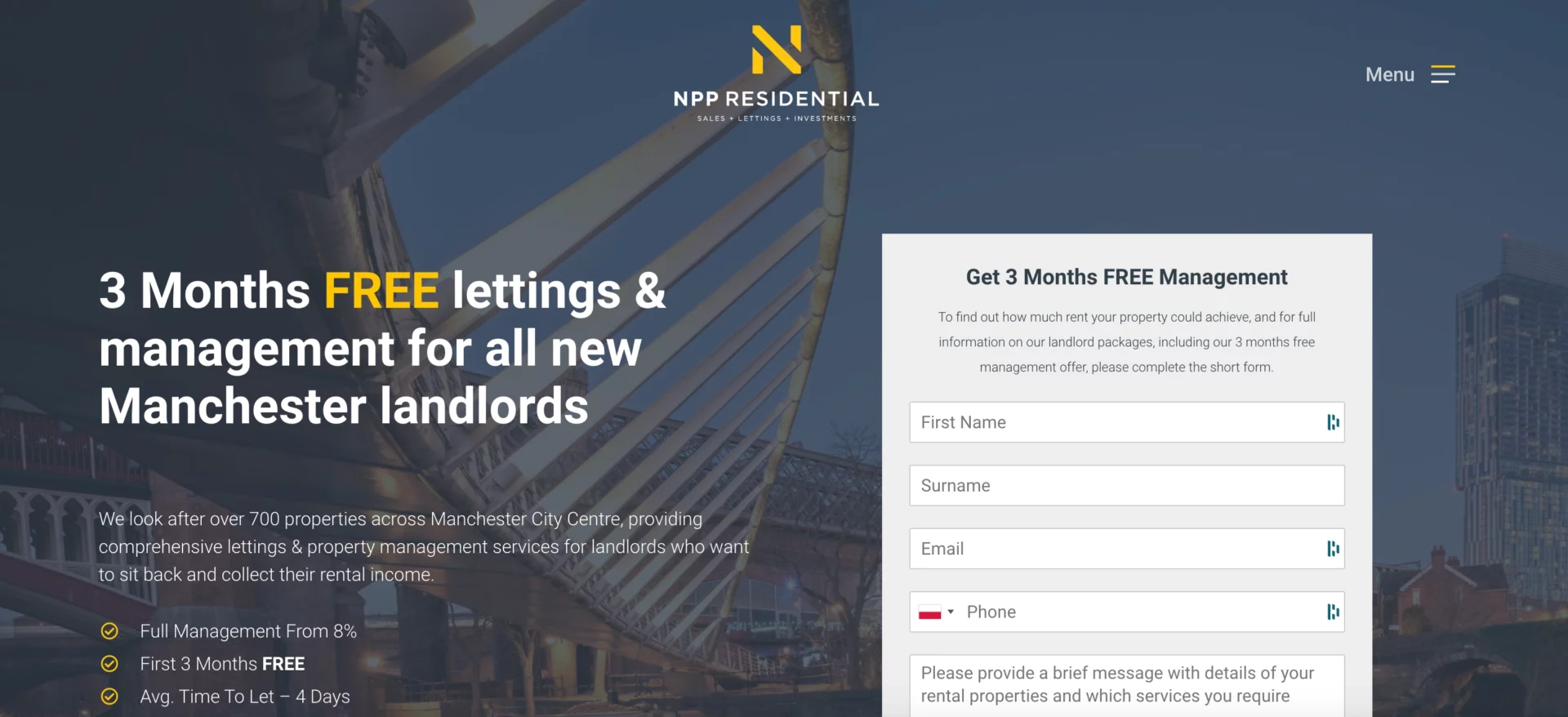
Pros: Word FREE is highlighted in every way (font, color, central place in the sentence). No distracting links around. Key benefits articulated with bullet points.
Cons: The “Submit” button should be moved up, as it is hidden below the line.
18. RedFin

Pros: The value prop is clear: “Sell for more, pay as low as a 1% listing fee”. The visitor knows by going with this company, they can expect low listing fees.
Cons: There are three CTAs on this page: find a home, sell my home, and see home estimate. Since the copy pertains to selling the home, it creates a bit of confusion for the visitors as to why the other choices exist.
19. Dream Town
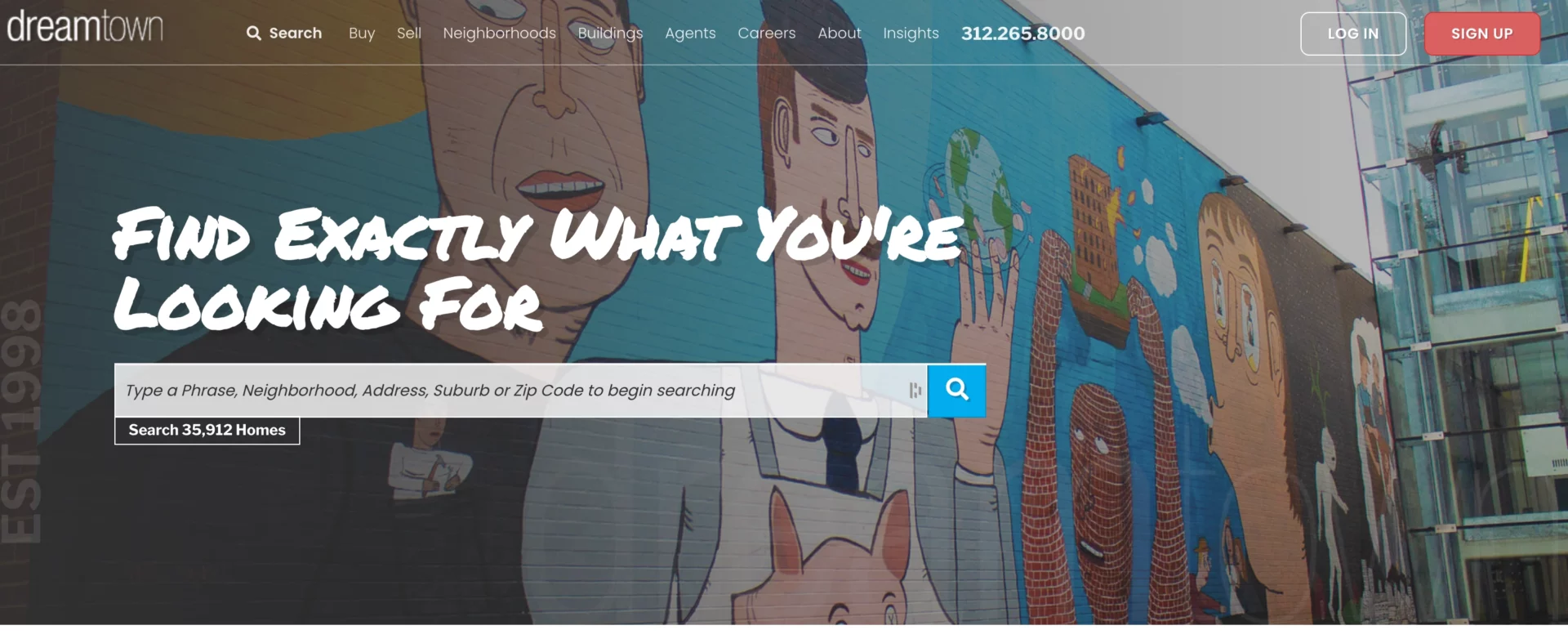
Pros: The page includes a simple form that allows visitors to search for homes in their area.
Cons: Although the mural image looks very nice, it’s not clear how it corresponds to the topic. The promise of what it is?
20. Rent.com

Pros: Less is more, as seen on this landing page. The copy is short but clear: “Rent your next apartment”. In addition, the background is clean, and the text is easy to read.
Cons: The menu bar is the only sore point of this page. If the page is meant to be used solely as a “landing page”. The menu could be removed to ensure the only action the visitor can take is to use the search form.
21. Compass

Pros: Similar to Rent.com, the simplicity of this landing page makes its intended purpose more apparent. The clever web copy “Let us guide you home” sets the tone for the page. The background also helps convey the message of finding a property that you can comfortably call home.
Cons: The form lacks an actual search button which may be confusing to some. Including a button would make the search form more user-friendly.
22. Berkshire Hathaway

Pros: The past two landing pages, including this one, follow the same effective blueprint. All elements on the page, from the background to the copy, help communicate the message of helping visitors find great homes.
Cons: Unlike the previous two, however, this landing page suffers from having multiple calls to action. You can search for other things aside from home (agents, offices, etc.) which could confuse some visitors.
23. McGraw Realtors

Pros: The page uses straightforward copy that resonates with people tired of the red tape involved in real estate.
Cons: The menu links and the chat widget are distractions. Thus, they could be removed.
24. Team Ruby Henderson

Pros: The impressive video tour with a family enjoying their new home speaks volumes and perfectly replaces a missing headline. Double CTA framed with red buttons surely help to collect contact information.
Cons: An effective real estate landing page should have some copy persuading the non-visualizers.
Create Your Own Real Estate Landing Pages with Landingi!
Inspired by these real estate landing page examples but aren’t quite sure where to start?
The Landingi platform has every tool you need to create landing pages. It makes it easy to build marketing creations that convert even without having any design experience.
Our platform has numerous real estate landing page templates to choose from, so you don’t have to come up with a design from scratch. Once you’ve selected a template, edit the elements to match your message and branding before hitting “Publish”.
Not to mention, our easy-to-use drag-and-drop editor makes designing your page a breeze should you want to build a landing page yourself. You can then track and measure the progress of your landing page based on conversions and other metrics. Use them to make your real estate landing pages work miracles for your business!


